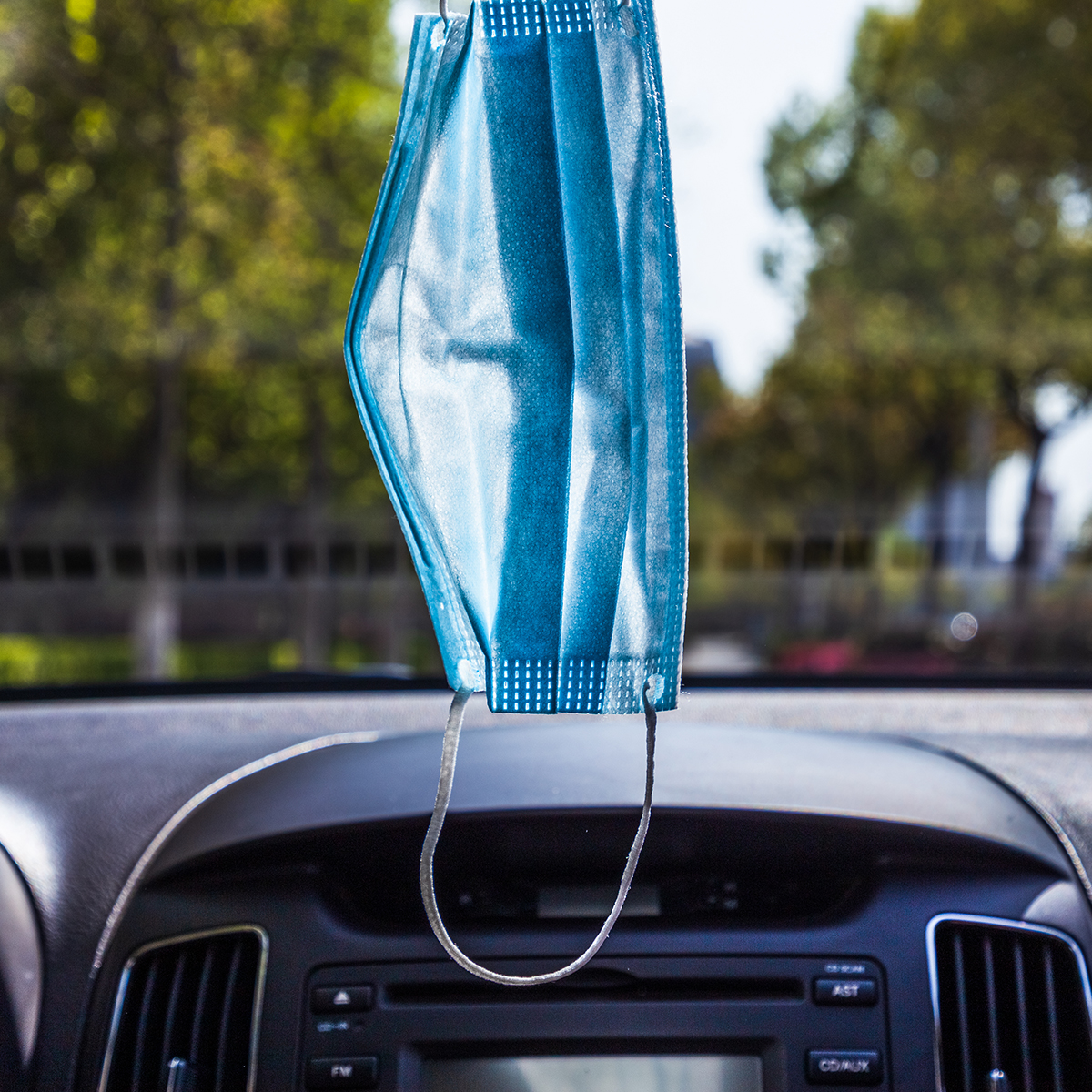-
Property & Casualty
Property & Casualty Overview

Property & Casualty
We offer a full range of reinsurance products and the expertise of our talented reinsurance team.
Expertise
Publication
Recycling of Large Lithium-Ion Batteries From a Property Insurance Perspective
Publication
The Future of Cryptography and the Rise of Quantum Computing
Publication
Personal Injury Compensation in Europe: An Updated Comparison Among Different Systems Within the European Market
Publication
Looks Like Inflation Is Sticking Around. What Do We Do Now? [Part 3 of 3]
Publication
Motor Insurance in the Post-Pandemic Era -
Life & Health
Life & Health Overview

Life & Health
Gen Re’s valuable insights and risk transfer solutions help clients improve their business results. With tailor-made reinsurance programs, clients can achieve their life & health risk management objectives.
UnderwritingTraining & Education
Publication
The Future Impacts on Mortality [Video]
Publication
Thinking Differently About Genetics and Insurance Business School
Business School
Publication
Fraud Survey in the UK & Ireland Sheds Light on Insurer Best Practices
Publication
Fight Against Fraudulent Claims – Highlights From Our South African Survey Moving The Dial On Mental Health
Moving The Dial On Mental Health -
Knowledge Center
Knowledge Center Overview

Knowledge Center
Our global experts share their insights on insurance industry topics.
Trending Topics -
About Us
About Us OverviewCorporate Information

Meet Gen Re
Gen Re delivers reinsurance solutions to the Life & Health and Property & Casualty insurance industries.
- Careers Careers
Reaching the Young Generations – Insurance Business Examples

September 26, 2022
Irene Ng
,
Dave Nicholas
English
Deutsch
Penetrating the Generation “Z” market has been a seemingly unachievable target many Life insurers face today. This generation, which knows the world only as one revolving around their smartphones, has expectations that differ greatly from the generations before.
The traditional ways of selling insurance, being perceived as a pushed-sales and cumbersome customer onboarding, do not resonate with this generation. Life insurers need to find innovative ways to convince Gen‑Zers that Life insurance is relevant for them and able to meet their needs (and expectations).
Several insurers around the globe have invested efforts and resources to find a solution to breach this gap. Gen Re has interviewed two insurers who have shown success in this space: Max Tiong at SNACK by Income and Dominic Holton at DeadHappy answered our questions concerning their unique approaches, their thought processes and their “secrets” of success.
SNACK by Income – Let your brands cover you!
What would incentivise Gen‑Z?
The key is hyperpersonalisation. Gen‑Zers grew up in the digital age where content and products are readily available, anytime anywhere, and catered to their preferences. In the age of social media, the attention span has drastically reduced, and bite-sized content is generally more favoured. Personalisation is a major deciding factor to choose a product.
Without a good value proposition, a generation that are used to subscription services (e.g. Spotify, Netflix) that offer seemingly more than the price will simply move on from the product.
How do you draw the Gen‑Zers attention towards insurance protection?
Insurance is often perceived as a complex topic, paying lump sum payments monthly or annually for a specific sum assured, and this commitment can be financially challenging for the young generation. We have to come up with digitally-savvy solutions to make insurance more accessible and affordable where everyone and anyone can have some form of insurance coverage regardless of their financial capabilities.
We also need to acknowledge that Gen‑Zers are generally not at the stage where they see insurance as a necessity. Therefore, we must find ways to embed insurance into their lifestyles, or offer financial products on platforms that they are already familiar with and can associate with.
As we continue getting young users onto the SNACK platform, it is our responsibility to inform them of the importance and relevance of insurance, as well as looking to provide them with a comprehensive and end-to-end experience.
Zooming into SNACK
SNACK by Income (launched in 2020) is a digital fin-lifestyle platform on which consumers build up their insurance and investments as they go about their daily activities. A little at a time, the SNACK mobile app helps accumulate insurance coverage (Term Life, Personal Accident insurance, and Critical Illness protection) and investments by paying bite-sized micro premiums of USD 0.30, USD 0.50 or USD 0.70 for a specific sum assured and USD 1, USD 2 or USD 3 for investments. Premium payments are linked to preferred lifestyle activities such as taking public transport using EZ‑Link (a stored-value card for public transportation in Singapore), spending on Visa cards or clocking steps via a fitness devise such as Fitbit.
SNACK firmly believes that having a small sum of insurance coverage is better than not being protected at all. Social media, robo-advisors and digital currencies such as crypto make investing trendy.
Who are your target segments?
SNACK targets everyone regardless of their financial background, including people with variable income, such as tertiary students and gig economy workers. SNACK sidesteps the financial commitment traditionally required for insurance products and lowers the barrier to entry. It bundles together traits that make a competitive digital product in the current landscape: low commitment, low cost and high flexibility.
As the top-end of the Gen‑Zers (approximate age 25) enter the workforce, these young professionals are accustomed to having choices in their products and services. SNACK solves one of the biggest pain points of the insurance journey for newly-minted graduates looking for jobs – expensive premiums and lump sum commitments.
Gen‑Zers increasingly take up jobs in the gig economy and freelancing, as it provides them with the flexibility that they desire. Such jobs also mean that their income streams are variable, and that’s where SNACK resonates well with them as it provides the flexibility in financial commitment they need.
SNACK directly works with gig economy platforms for grocery delivery and courier services, such as foodpanda, Lalamove and MilkRun, to let their riders and drivers build up insurance coverage and investments earned from their deliveries. Twenty-five percent of the policies issued on SNACK are from gig economy workers.
What is your marketing strategy?
While developing a creative proposition for Gen‑Z is important, what is equally relevant is putting in place a solid integrated marketing strategy through effective channels for the greatest impact. The objectives of SNACK’s marketing strategy are to:
- Encourage access to financial products, especially among the digital natives/innates and the underserved segments – driving awareness of SNACK, encouraging calls to action such as mobile apps downloads, sign-ups and boosting engagement on the various online platforms that resonate with its target segments
- Enhance Income’s visibility as an innovative digital insurer and to establish and grow the company’s reputation in this regard
- Attract like-minded partners in the digital ecosystem that its target segments are familiar with, to augment Income’s digital capabilities and innovative insurance offerings
Could you share some examples of how you reach the Gen‑Zers?
TikTok and Instagram
To create brand awareness and engagement SNACK ran the #SpareChangeChallenge. True to SNACK’s concept – insurance with spare change/bite-sized contributions – people were asked to submit videos on TikTok and Instagram of themselves getting creative with their coin(s). The most creative submission won a year-long supply of bubble tea. To extend outreach, the team also engaged SGAG’s team of influencers (Singaporean social media website and news media company) to take part in the challenge.
Engaging influencers
SNACK handpicks influencers that can bring across the message and branding of SNACK in the best way possible, and who Gen‑Zers are familiar with. Instead of a one-off engagement, SNACK chooses to partner with influencers on a longer-term basis (e.g. with Carrine Low, a well-known Singapore influencer).
Telegram
Tapping on a channel which most Gen‑Zers are on, the team ran a series of tactical promotions to reach targeted segments and drive the call to action.
Lifestyle platforms
Being in the same place as the target segment is important, so SNACK curates its marketing channels based on selected lifestyle platforms where Gen‑Z most frequents. This maximises reach and conversion. SNACK can leverage its ecosystem of lifestyle partners right from the get‑go to cross-promote content and extend outreach to more people.
Campus outreach
SNACK is highly engaged with educational organisations such as Republic Polytechnic, Nanyang Polytechnic and Temasek Polytechnic. We constantly hold sharing sessions (in‑person and webinars) with the students to raise awareness about SNACK.
You have launched new propositions to the market?
Since its initial launch, SNACK has been constantly innovating and coming up with new propositions and products to further embed itself into its users’ lives.
SNACKUP: Users get cashback in the form of free insurance coverage and investment credits as they spend money at SNACKUP brands – i.e. companies that resonate well with the target segments such as Gen‑Z. These cashbacks are paid for by these SNACKUP brands to reward their customers for engaging with their brands. For example, for each purchase at foodpanda, foodpanda customers will receive USD 100 free insurance coverage, entirely paid for by foodpanda.
SNACK Pack: Users pay a monthly subscription and additionally to insurance cover they receive lifestyle perks (e.g. a USD 10 Shopee voucher). This model of purchase resonates with Gen‑Zers as they are used to this subscription model, popularised by brands such as Netflix and Spotify.
SNACK is transforming the way people view and engage with insurance. Now, instead of having only the insurer contribute to a consumer’s insurance plan, we are creating an entire ecosystem of partners who are adding to the consumer’s coverage.
DeadHappy – Life insurance to die for!
Who is DeadHappy and how did you come to be?
DeadHappy exists because we believe Life insurance can be done better. When we say “better”, we don’t mean a new advertising campaign or a free ball-point pen. We mean real change that makes a real difference. That’s why we’ve reinvented Life insurance to be cheaper, easier and better. All designed with the customer in mind.
DeadHappy wanted to create a journey that appealed to those who wouldn’t ordinarily be drawn towards a traditional Independent Financial Advisor. We weren’t trying to “steal anyone’s lunch”, but to offer an alternative way of buying insurance for consumers who are driven by different values and who were comfortable in a digital environment.
Zooming into DeadHappy
DeadHappy is a digital first Life insurance provider. It was formed in 2013 to provide a place where people could think about, plan for and share what they want to happen after they have died. Our aim is to start a conversation, and hopefully, one day change attitudes towards death.
Knowing the average Life insurance policy was cancelled after seven years, it was clear the traditional Life insurance model was just not working for a lot of people. We’ve set out to create a whole new product that was easier, faster, cheaper and much more flexible, and all designed with the customer in mind.
Our Life insurance is:
- Jargon-free – We don’t believe in complicated language.
- Fast – Getting your life insured doesn’t have to be a laborious process; with us you can get it done in under three minutes.
- No long forms – We ask only four questions.
- No tie‑in – Cancel any time, with just one click.
- Tailored to the customer – It’s your life and your death, so you decide what you want to happen when you die.
Who are your target segments?
We didn’t specifically target Gen‑Z but, not surprisingly, we sell to a much younger audience. Approximately 10% are Gen‑Z and 30% are between 25 and 30. This is much younger than your typical insurance writer.
It is well known that Gen‑Z are much more motivated by a positive experience and rely heavily on their smartphones for pretty much everything they do. The phone is definitely the gateway to their custom, so we focused heavily on making this work.
What are your key offerings?
Lots of traditional companies sell through a smartphone, but market research suggests that customers seldom find it “easy”. Despite what you might think, younger consumers don’t always wish for no human interaction. But when they’re faced with digital, they want it to be easy and simple. These are core values of the DeadHappy proposition.
Ease of purchase
Ease of purchase has always been a key deliverable for us. We don’t take it for granted and are always looking for feedback to improve our proposition. We undertake exit interviews after every successful purchase. It’s interesting to note that around 60% say that the process was “much easier than expected”. That just reinforces our views that the perception out there is that buying insurance is hard, even if you’re young and have nothing wrong with you!
Our culture is “We have nothing to hide” and “What you see is what you get”.
Value for money
Price is important for younger customers and particularly Gen‑Z. They’re not fans of debt and love value for money. One way of keeping the cost down is making the term annually renewable. In other words, the policy is priced each year based on the current level of risk rather than over a longer term where the risk of something happening is much higher. On average, premiums rise each year by around 5% and a maximum of 8%.
This is a big sell for younger applicants who aren’t in the least bit interested in a long-term product. They know they will have major life changes in the next 10 years (a new job, mortgage, children, etc.), so don’t need as much security. They can change the term at any point – all we ask them to do is go through the underwriting questions again.
So, they have real flexibility to do what they want, not the kind of flexibility traditional carriers offer with complex and extremely difficult-to-understand Guaranteed Insurability Options that test even the most insurance-savvy buyer’s technical knowhow.
Quick processes
It’s not just time you’ll need for traditional application forms. Expect to have an encyclopaedic memory of your full medical history up your sleeve. You’ll need to brush up on clinical vocabulary, as you’ll have to know if you’ve ever had “peripheral vascular disease”, “ulcerative colitis” or “optic neuritis”. They sound big and scary, so you could safely assume you’d remember if you had them. But what about other people in your extended family? The process will want to know.
Our questions are much shorter (just four in total), and it’s a lot less stressful. This helps us put people “on risk” in a matter of minutes. And that’s what Gen‑Zers want. They don’t like long drawn-out processes, they want what they want, now. They don’t want to be hanging around, they’ve got things to do and people to see.
How did you come up with the concept of Deathwishes?
A traditional insurance purchase is full of jargon that many young people simply don’t understand and is full of difficult decisions (like how much cover do I need). Insurance companies like to make it as complicated as possible by chucking together a variety of insurance products in the same application process. Family Protection, with Mortgage Protection, and maybe some Income Protection, and how about Critical Illness cover on the side? Then strap yourself in for the ride down the rabbit hole of options: premium waivers, deferred periods, increasing cover. The list goes on!
We’ve tried to remove all of that and change the conversation to one that’s needs-led, not product-led. This is where our concept of the Deathwish comes in. It’s basically asking the applicant to imagine scenarios you might like to happen with the policy proceeds if you die, and then try and put a number on it. It’s still a difficult question, but one that is achievable with a steer or direction.
The customer still controls the conversation. But moving them away from “it’s the responsible thing to do” and asking them to think about pets is a perfectly valid way of getting them to think about protection in a totally different context that’s more aligned and less instructive.
Obviously, some people still default to the more traditional ideas (pay for a big send-off, pay off a mortgage, pay off my student debt, etc.) but many concentrate on smaller, more emotional things that wouldn’t usually be front of mind. We get a lot of requests for charitable donations, things that help the environment such as planting trees, as well as some more “obscure” requests. This really resonates with a younger audience, who are much more enthused with leaving a legacy.
All of the above factors make our product more tangible. It’s a massive win when your audience feels that they understand the product well.



